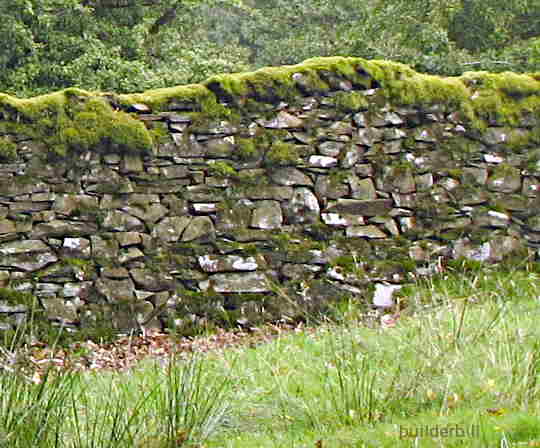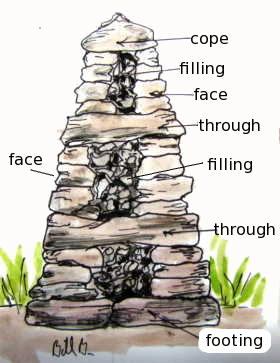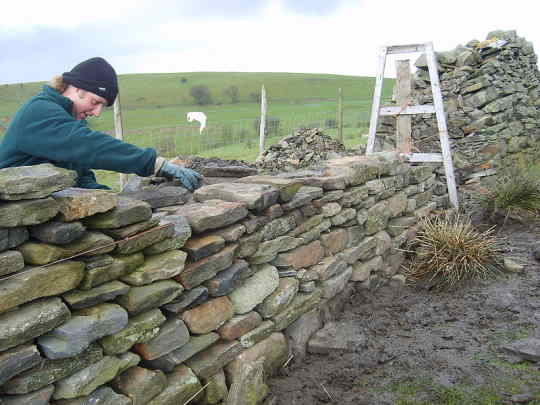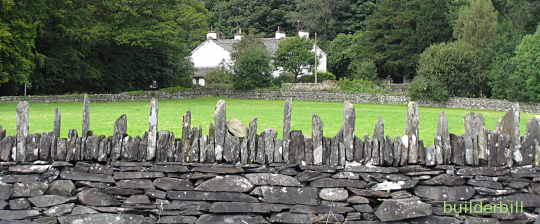 |
||||||||||
Graphical Construction Glossary >> masonry. >> stonework >> Dry Stone Wall
There is a great love for these dry stone walls just about everywhere that they are used. They are often seen on open and wild moorland, on hillsides and fells that are popular with hikers. They can be enhancements to the landscape and they are very much of a part of the heritage value of many areas causing people to form associations in many areas to protect and conserve them.
A rough indication of how the walls are constucted is shown on the left. The throughs are not isolated stones like perpends in other masonry work, but they abut each other to form a full course the lenght of the wall. The cavity between the face stones is filled with small pieces of stone rubble which is known as fillings.
Walls of this type are built with a taper, that is they are narrower at the top than the bottom, the faces slope inward and that inward slope is called the batter.In the photo above a waller is repairing a wall and as a guide he is stringing his lines of a purpose made frame that is called naturally enough a batter boards. The lines are not used in the same precise way that bricklayers use them, but a high and a low line is fixed and they are used to sight along to keep the stones in the same plane.
The jagged appearance of the top of this wall is typical of walls in sheep grazing country. They are done to stop sheep from trying to jump or climb over. (A lot cheaper than building the wall higher :-) The vertical pieces are known locally as cams. If you didn't find exactly what you are looking for try this search tool that will search the site and the web. "What can be added to the happiness of a man who is in health, out of debt, and has a clear conscience? "When we build, let us think that we build for ever."John Ruskin 1819-1900 |
Hire Equipment  Furniture Fittings - Architectural Hardware - Electronic Locking Systems - Technical Hardware BuilderBill sponsorship Glossary Pages.Roof Glossary and Roofing Formwork Glossary and other tempory work. Hand Tools Glossary Power Tools Glossary Asbestos Glossary Woodwork Glossary Stair Glossary Concrete Glossary Masonry Glossary doors Glossary BuilderBill Books Building Maths  Stair Design  Asbestos Book |
|||||||||
|
|
||||||||||
|
Please Note! The information on this site is offered as a guide only! When we are talking about areas where building regulations or safety regulations could exist,the information here could be wrong for your area. It could be out of date! Regulations breed faster than rabbits! You must check your own local conditions. Copyright © Bill Bradley 2007-2012. All rights reserved. |
||||||||||



